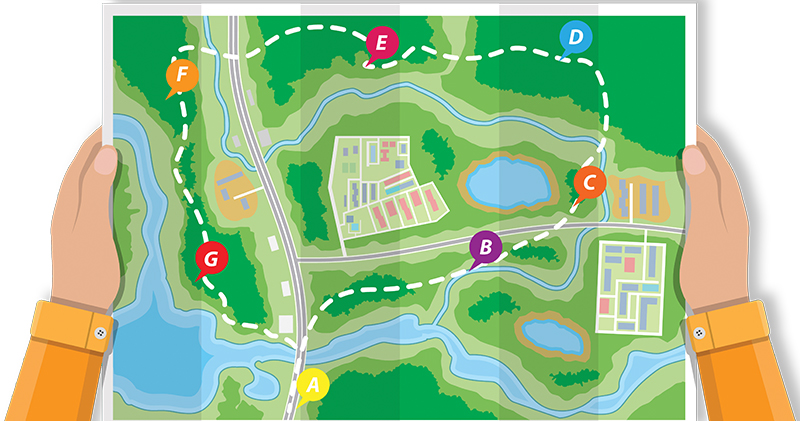Complexity is Complex
By Jeff Finkelstein
For the past few months many photons and electrons have nobly given their ever so short life for the singular purpose of informing the industry about DOCSIS 4.0. In my opinion (and not just because I was part of the team that got it going; well, maybe a little…) DOCSIS 4.0 is the most recent in a long line of excellent innovations that has come to the industry under the guidance of CableLabs. Every new version of DOCSIS has provided increases in capacity along with many other enhanced features, but it has not been free as there is an additional cost with new complexity introduced in each version. As all involved have learned over the years while we earned our stripes deploying DOCSIS, complexity is complex.
DOCSIS 4.0 introduces an entirely new set of complex concepts. Many are evolutionary steps from previous versions, but a few are new ways of looking at things. Note that I am not going to get into the details of what is going into DOCSIS 4.0 in this article, but future articles in 2020 will discuss them at length.
Let’s start with the key features of what is being put into D4.0.
1. Full duplex DOCSIS
2. Extended spectrum DOCSIS
3. Low-latency DOCSIS
4. Low-latency mobile backhaul
5. Enhanced security
Each one on its own is complex enough to deserve its own complete specification, let alone collapsing them all into a single specification. From the perspective of operators and vendors, we decided to issue a magnum opus of specifications to have the building blocks for many years of growth.
With the new complexities being added, how do we deal with each new level of challenges introduced?
It all begins with a single step
The Chinese philosopher Lao Tzu said, “The journey of a thousand miles begins with a single step.” We cannot argue with the logic and truth behind that statement. I offer my corollary philosophy to Lao Tzu that states, “The journey of a thousand miles begins with a map.”
When your goal is to reach a distant end point and you have no map, then every step takes you in the right direction. You may have to take many more steps than required as you have not set waypoints along the path, which is fine if your goal is to enjoy the journey. If your goal is to get there as quickly and efficiently (and cheaply) as possible, then you need to have some idea the direction to head and where you want to stop along the way. I have talked about this in past articles using a GPS as the metaphor. When we had hardcopy maps, we could follow them but had no a priori knowledge of the dynamic changes ahead in our journey. AAA TripTiks were the first step towards giving more information on road conditions based on available information. Google Maps gave us even more information based on updates from the map application on our mobile phones. But it wasn’t really until Waze that we got real-time updates based on input from those ahead of us on the road. Then of course Google bought them…
Technology roadmaps are directional guidance, they are not real-time updates for technological choices. Too often in the past, but less so today, we were held captive by our roadmaps which often were out-of-date as soon as they made it through the budget cycle. Even though technology was changing we were held to decisions made a year or more before.
When you have a map then each step takes you closer to the goal, unless of course things happen that result in a chosen detour. Without a map you could possibly be on a detour, but you would not know it until too late. While wandering is fun on holiday, when it involves committed deployment dates and revenue commitments, it is not quite as enjoyable when things are late.
Or as we old-timers learned in one of the early computer games called Adventure, “You are in a maze of twisty little passages all alike.”
So what?
For many, a technology or product roadmap is the North Star, an absolute guide to what we are going to do for the next year. For others it is a financial model. And for others it is a competitive response. It may be some part of or all of the above. I have written often about the need for a roadmap, so I’m not going to dwell on that. What I want to cover this month is why DOCSIS 4.0 as the most innovative and elegant version of DOCSIS to date requires a staged deployment strategy.
We have seen many articles and presentations on DOCSIS 4.0, but let’s take a look behind the curtain of what it means to us and why it requires our commitment as an industry to move it forward.
Set the WayBack machine to 2014 when a small group of us started talking about what a future version of DOCSIS may contain. All sorts of crazy ideas were floated from replacing OFDM to creating a DOCSIS-like protocol to run over wireless and fiber delivery vehicles. Shortly afterwards papers were being written (see Cloonan and Chapman papers for SCTE) that discussed increasing the available frequency and other ideas about how we could make use of things like full-duplex technologies to increase bandwidth. We thought the idea of what may come after OFDM (just as OFDM supplanted SC-QAM) could have significant benefits, but realized it required more research than we had time available during the discussions. Stay tuned on that topic…
As we discussed the potentials for a major DOCSIS version release, we applied the three basic tenets of technology change:
1. Are we willing to change?
2. Is it better than the status quo?
3. Are we able to execute it?
As these questions were applied to the technologies being discussed we were able to work through the ideas and narrow them down to a pragmatic reality. That is not to say that the ideas discarded were not good, but some, while interesting, did not meet all three criteria.
Let’s use the 3 GHz OSP idea as an example. Were we willing to change from our current 1.2 GHz spec? Yes. Is it better than the status quo? It has more spectrum, but it introduced new challenges that would either force us to respace amplifiers or add a mid-span amplifier. Are we able to execute it? No, as a complete plant redo at this time is made of that rare metal called unaffordium. While we did agree that we needed to plan for a 3 GHz upgrade in the future, the most realistic way to get there was to split the idea into two parts. The first part is to build new taps with 3 GHz capable bodies, but only use 1.8 GHz faceplates that can be swapped out later for 3 GHz faceplates.
In the end the compromise made sense to everyone. It allowed us to make changes to the plant to solve spectral concerns for the next five or more years, while positioning ourselves for a kinder and gentler plant upgrade in the future by doing faceplate swaps. The same is true of amplifiers and housings. We can replace existing amps on an as-needed basis with 3 GHz qualified housings, but the initial innards will only go up to 1.8 GHz.
This was a good decision as was proven at the recent SCTE Cable-Tec Expo where many vendors had 1.8 GHz capable actives and passives on display, but almost all were based on a 3 GHz capable housing.
That’s enough hyperbole for now. In the rest of my articles for 2020 I plan on delving deeper into use cases for DOCSIS 4.0 technologies and ways to think about planning for future needs.

 Jeff Finkelstein
Jeff Finkelstein
Executive Director of Advanced Technology
Cox Communications
Jeff.Finkelstein@cox.com
Jeff Finkelstein is the Executive Director of Advanced Technology at Cox Communications in Atlanta, Georgia. He has been a key contributor to the engineering organization at Cox since 2002, and led the team responsible for the deployment of DOCSIS® technologies, from DOCSIS 1.0 to DOCSIS 3.0. He was the initial innovator of advanced technologies including Proactive Network Maintenance, Active Queue Management and DOCSIS 3.1. His current responsibilities include defining the future cable network vision and teaching innovation at Cox. Jeff has over 43 patents issued or pending. His hobbies include Irish Traditional Music and stand-up comedy.
Shutterstock




